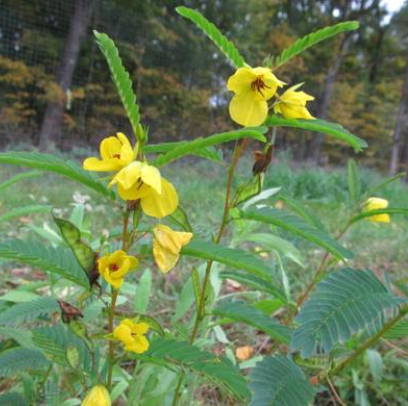
How to Start a Wildflower Garden in Fall
 You may have noticed, the local meadows and fields looking a little spooky
You may have noticed, the local meadows and fields looking a little spooky
lately. Bright blossoms and lush foliage have been replaced by a quickly graying landscape of bare stems topped with dry brown heads, or (like in the case of Milkweed and many grasses) explosive-looking messes of fluffy fiber, seeds, and petals. This seemingly dying landscape is actually busy creating new life. The browned flower heads are full of new seeds, which, with every breeze are released and planted. As gardeners, we are most successful when working along with the natural rhythms of our environment and so, benefit from mimicking this autumn sowing period in our own gardens. So, go ahead and copy nature by starting a wildflower garden this fall!
 Planting in the fall has many advantages. It is less stressful for plants than spring planting because they can lie dormant through winter and emerge at what they deem it the perfect growing moment in spring. Fall planted flowers will bloom up to two to four weeks sooner than spring planted ones. There are fewer weeds to compete with at this time of year, which is not only easier for the sown seed’s development, but for the gardener too! There is a larger planting period in fall – unlike spring, where the planting window is short, autumn sowings can be down any time after the temperatures cool in late fall and before the ground freezes.
Planting in the fall has many advantages. It is less stressful for plants than spring planting because they can lie dormant through winter and emerge at what they deem it the perfect growing moment in spring. Fall planted flowers will bloom up to two to four weeks sooner than spring planted ones. There are fewer weeds to compete with at this time of year, which is not only easier for the sown seed’s development, but for the gardener too! There is a larger planting period in fall – unlike spring, where the planting window is short, autumn sowings can be down any time after the temperatures cool in late fall and before the ground freezes.
How to Start a Wildflower Garden:
- Prepare the soil just like you would for a spring bed. Clean out the weeds. Aerate it with a garden fork if it’s compact, then rake flat.
- Scatter the seeds as evenly as you can over the prepared area, following spacing recommendation on the seed pack. Then, press them into the soil so they are secure, which is easiest to do by walking over the planted area (with flat soled shoes!) or using a board to pat them down.
- Water them in if your soil is dry, although at this time of year, soils are usually moist enough to not need it.
- Put on a warm sweater and wait till spring.
- In spring, you see seedlings sprouting at different times. Unless it is abnormally dry, there's no need to water them. Weeding is important, however, until the flowers reach a mature size.






